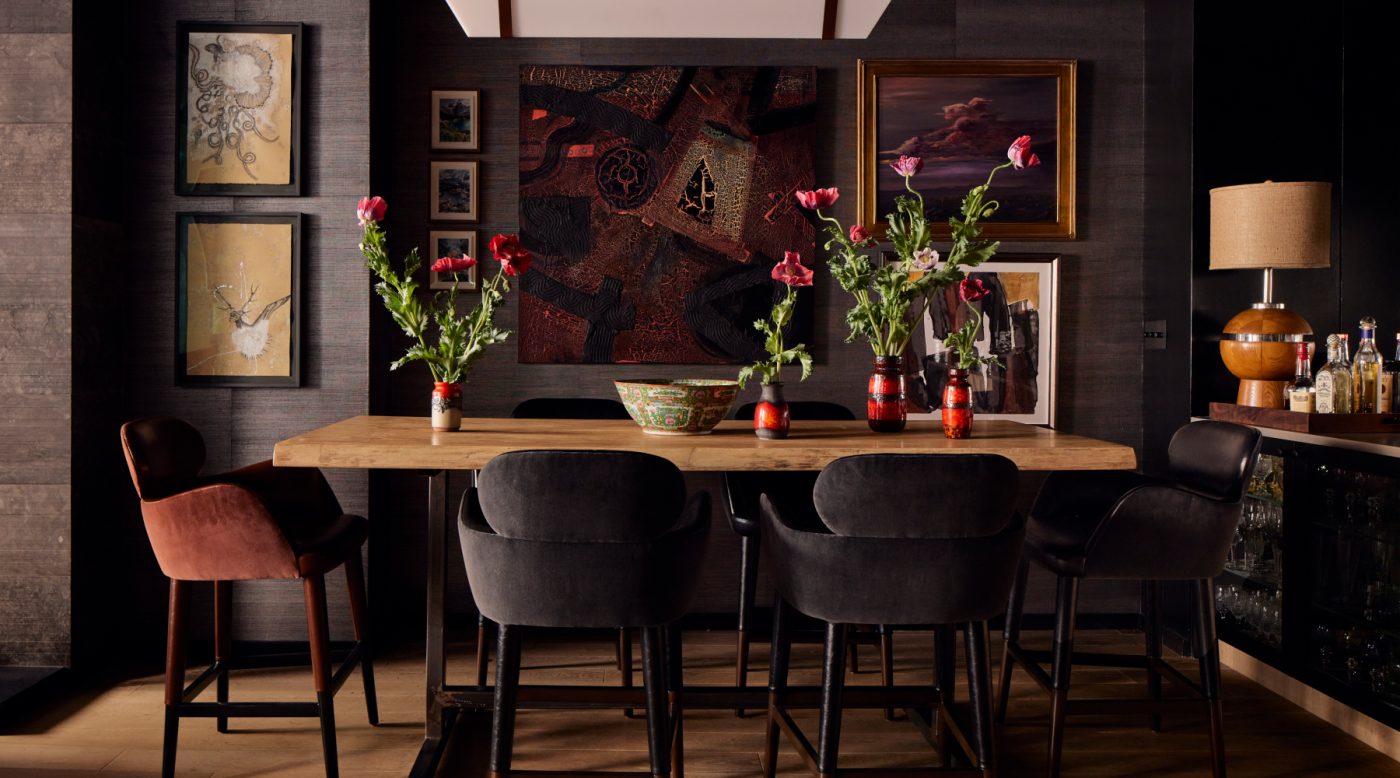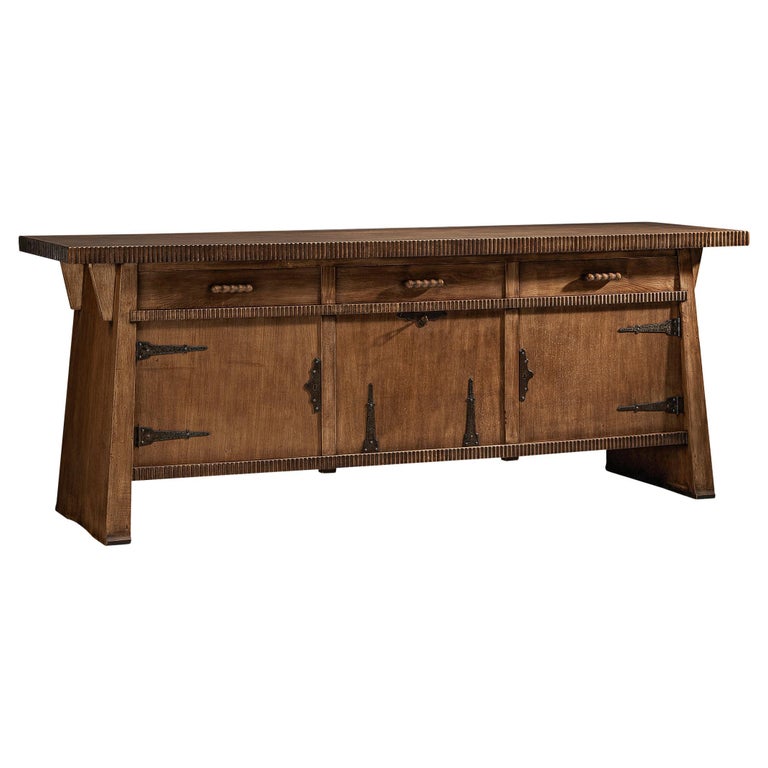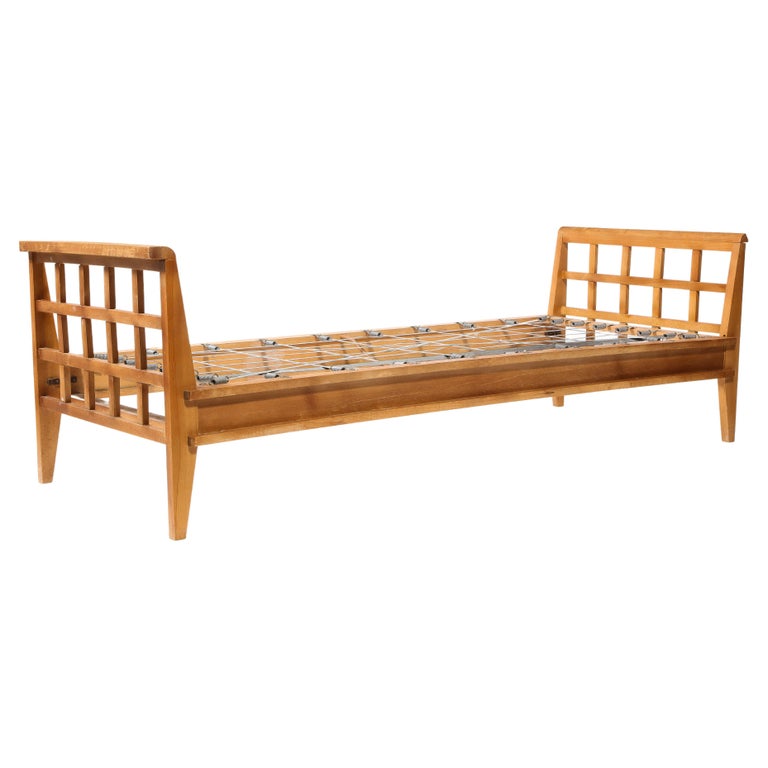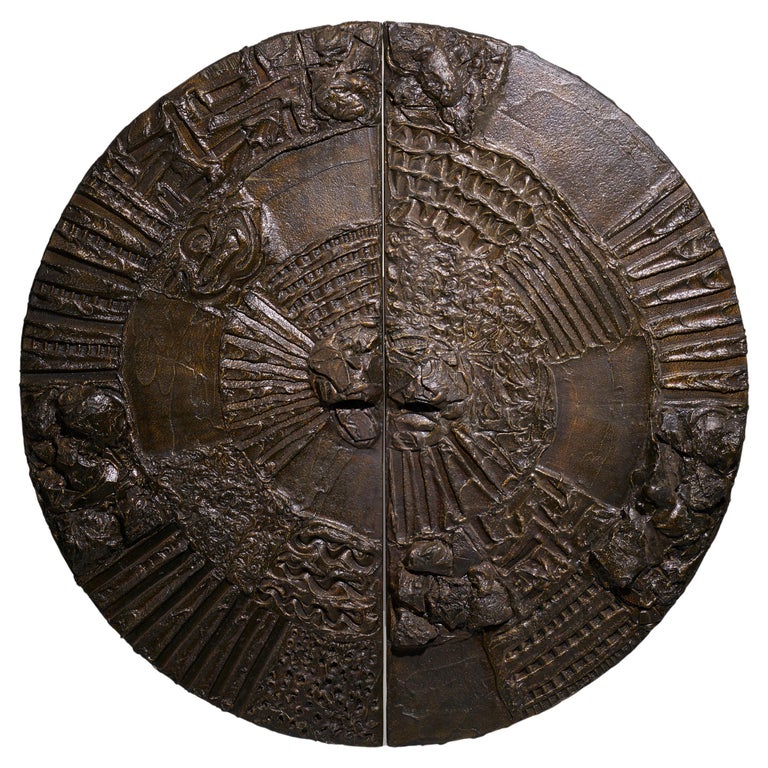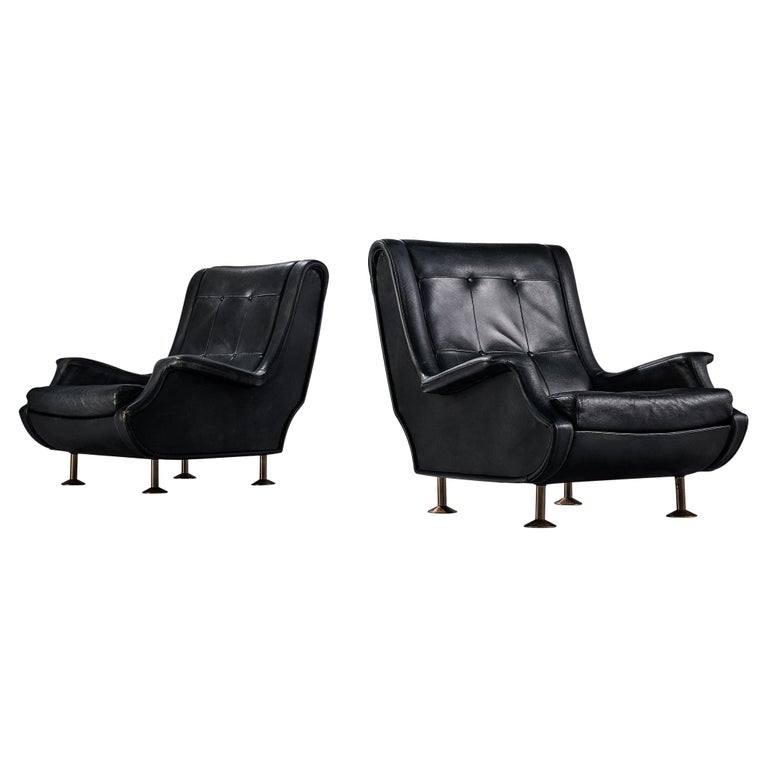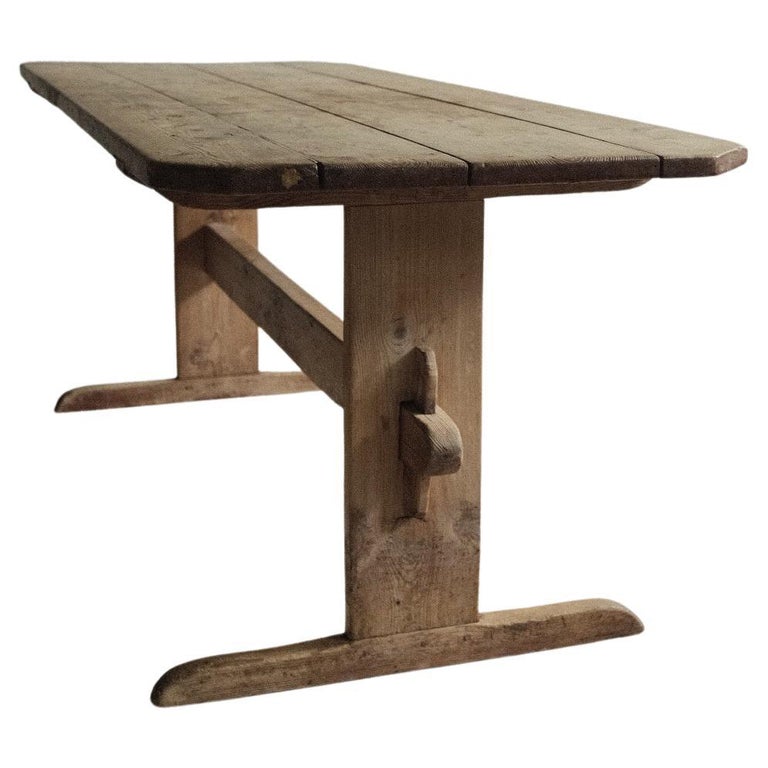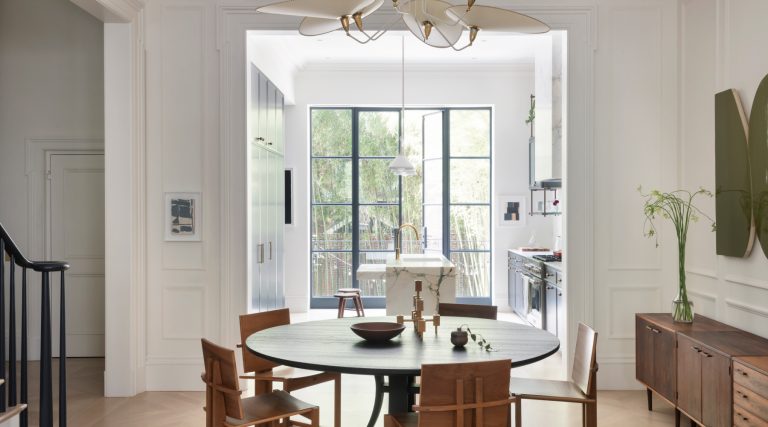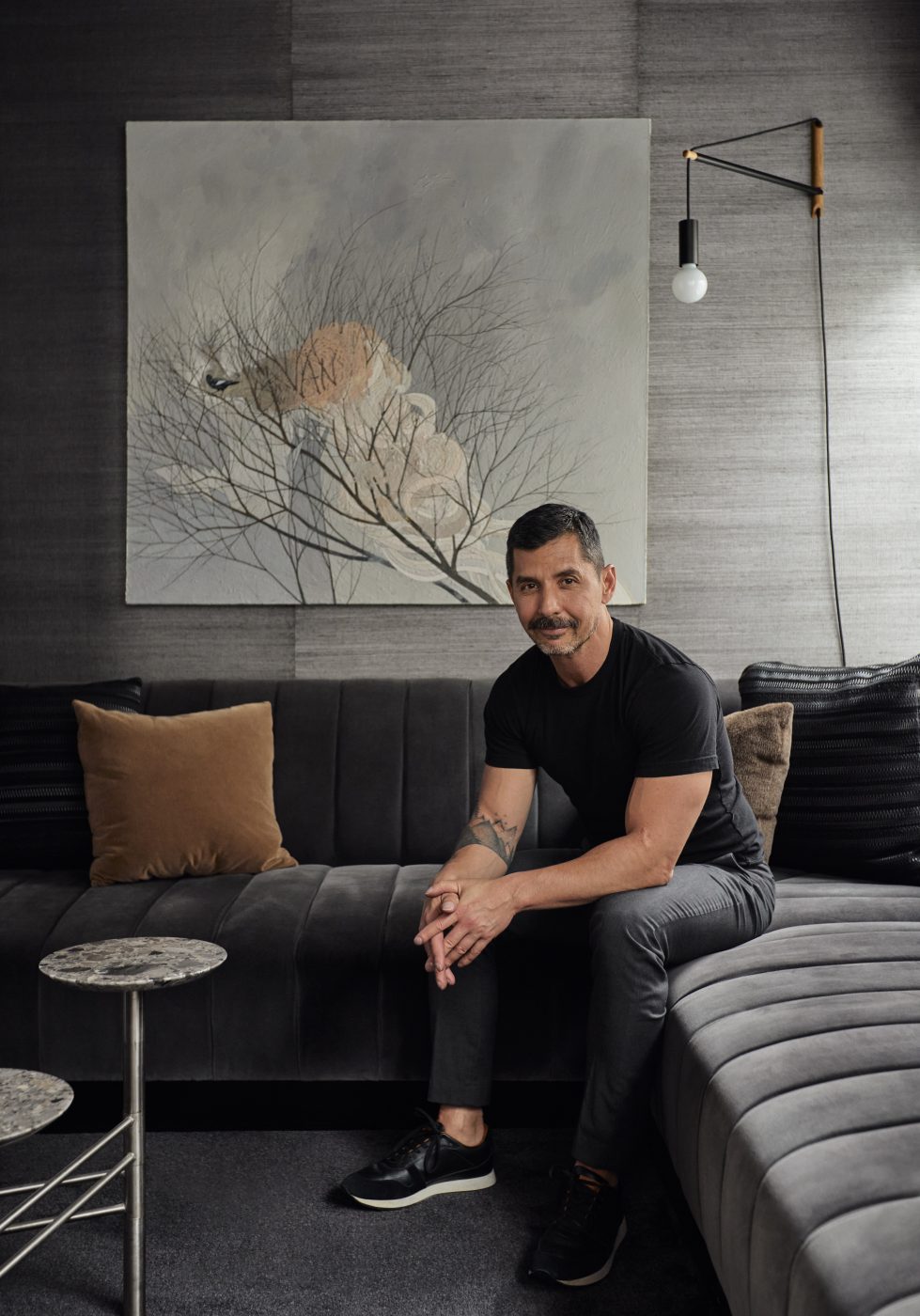
December 17, 2023While working for society designer Greg Jordan from 1995 to 2005, Eddie Lee took part in countless shopping days. “It was Greg and me and a Polaroid camera.” he recalls. “We’d hire a car and driver and start on the Upper East Side in the morning and head downtown. Wherever we stopped — antiques dealers, furniture and lighting showrooms, galleries — when we saw something we liked, I’d take a Polaroid and write on the back. Take another Polaroid and write on the back. And on and on. We’d end up in Soho after eight hours of shopping, and I’d have a hundred or more Polaroids to show our clients.”
These days, Lee does much of his shopping on 1stDibs — no Polaroid required. And not just on behalf of clients. His own apartment, a compact two-bedroom in New York’s Hell’s Kitchen, has at least 50 items from the site. Many of them were bought during the pandemic. “I was one of those New Yorkers who stayed in the city,” Lee says. “It just felt wrong to leave.” Once he decided to stay — working from his dining table for more than a year — he also decided his place could use a tune-up. But during the pandemic, in-person shopping was fraught. He found the solution online.
Lee’s goal, he says matter-of-factly, “was to make the place exactly how I wanted it.” And that “is a little Lost Boys, a little Studio 54,” he explains, referring to 1987 film about teen vampires living in a cave and the legendary nightclub. Think of it as a man cave with glitter.
Lee’s Hell’s Kitchen building was erected in 1910 as one of the city’s first parking garages, which explains its massive concrete beams and 12-foot ceilings. In the 1930s, it became a commercial bakery, and in the 1980s, it was converted to apartments. To reduce the air-conditioning load, the developer dropped the ceilings to eight feet. The first thing Lee did when he bought the apartment, in 2015, was rip out the dropped ceiling, giving him a lot more headroom, as well as taller walls to hang his art on. He opened up the kitchen and turned a smallish bedroom into an even smaller one, to accommodate a kind of vestibule that separates the bedroom from the bathroom. (Before he created the vestibule, the bathroom opened onto the living room, an arrangement Lee thought wasn’t very gracious.) Then, he turned the second bedroom, just a little bigger than a California king, into a study that serves as a guest room in a pinch.
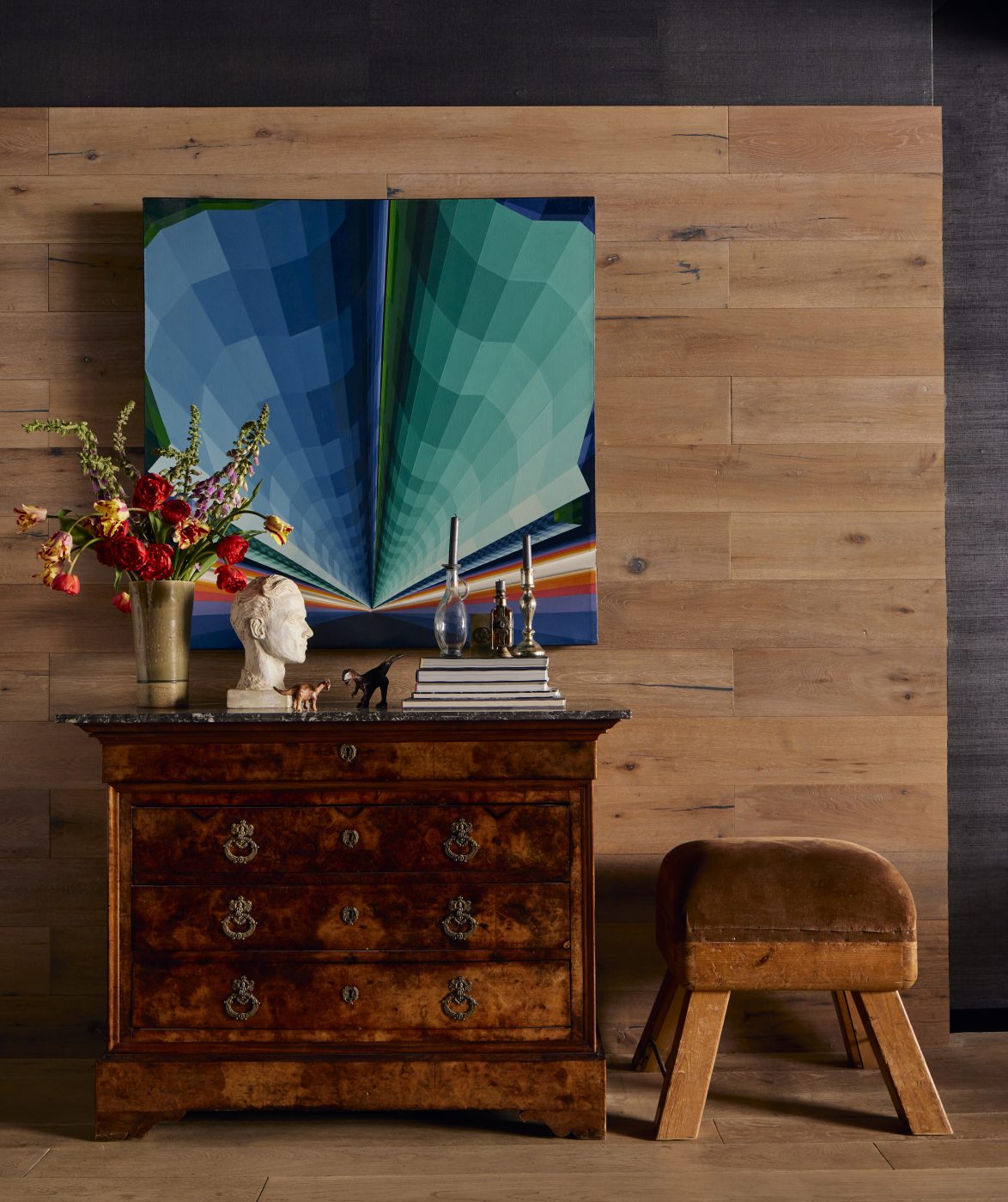
That was eight years ago. In the latest redo, Lee didn’t move any walls, but he did change nearly everything else. In keeping with his theme, he wanted to make it “darker and moodier — but with bursts of color.” The apartment doesn’t get a lot of direct light, he notes, “and I decided to lean in to that.”
First came surface treatments. He replaced white kitchen cabinet doors with black ones. And he covered the walls of the living-dining area in a charcoal-colored grasscloth. “It’s dark but has a little bit of sheen,” he says. He covered the fireplace, formerly glazed brick, in charcoal-colored raked black limestone.
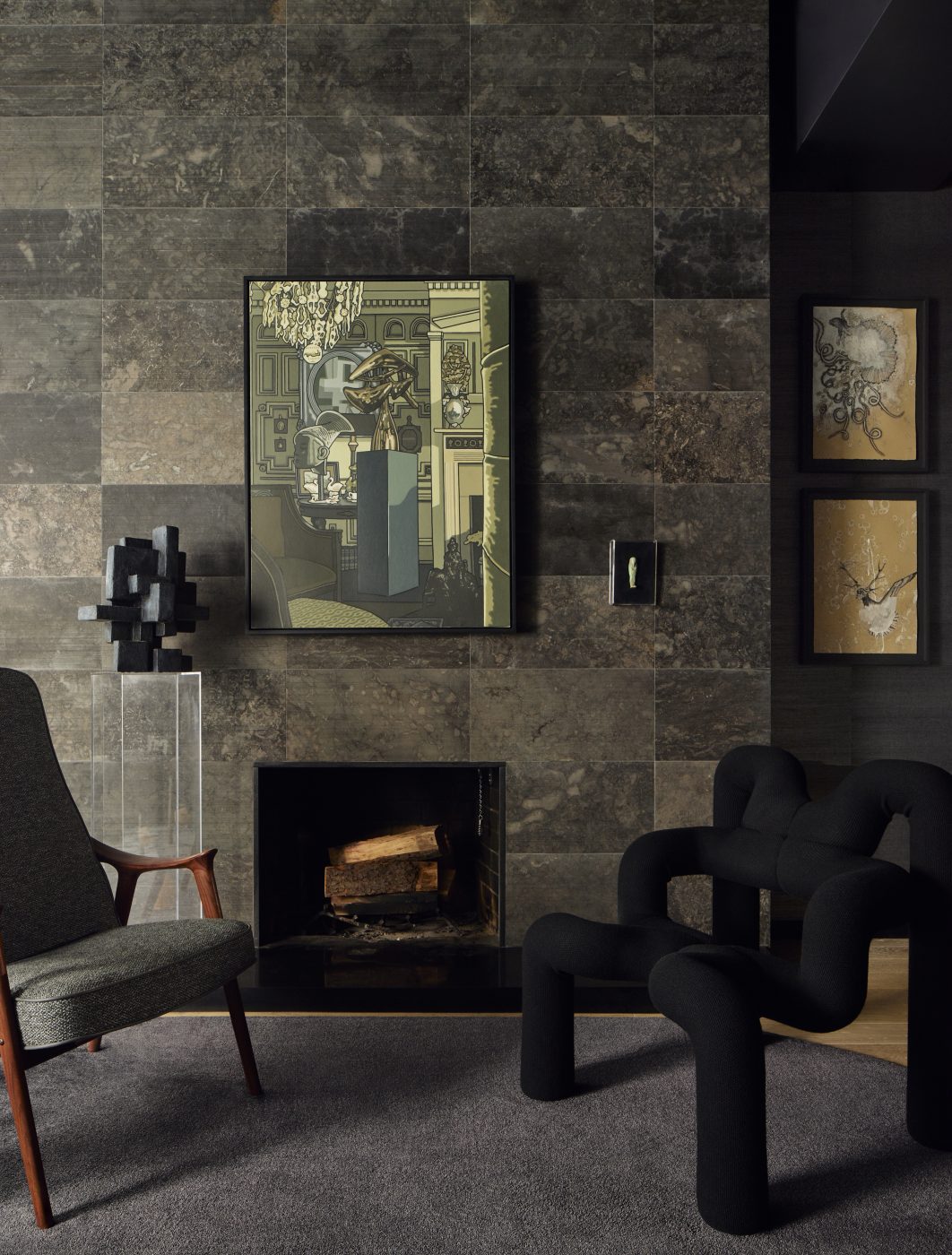
In his bedroom, Lee covered the ceiling in cork and the back wall in Airslate — thin slices of stone from Porcelanosa.
Then, he began filling the rooms with furniture and art, some new (to him) and some that he already owned. The biggest piece is a custom sofa covered in gray velvet. (A screen drops down from the ceiling across from the sofa when Lee has movie nights with friends.) At the other end of the main room is a live-edge bleached-teak dining table designed by Lee and crafted by Soleil. “I’ve always liked sitting at a high table. It feels like you’re eating out. It’s communal and lively.” Plus, he adds, “you get the views. You’re not looking at the back of a sofa.” Surrounding the table are six Artistic Frame chairs that he ordered at bar-stool height. Five are black leather and velvet; the sixth is cinnamon-colored, “just to shake things up.”
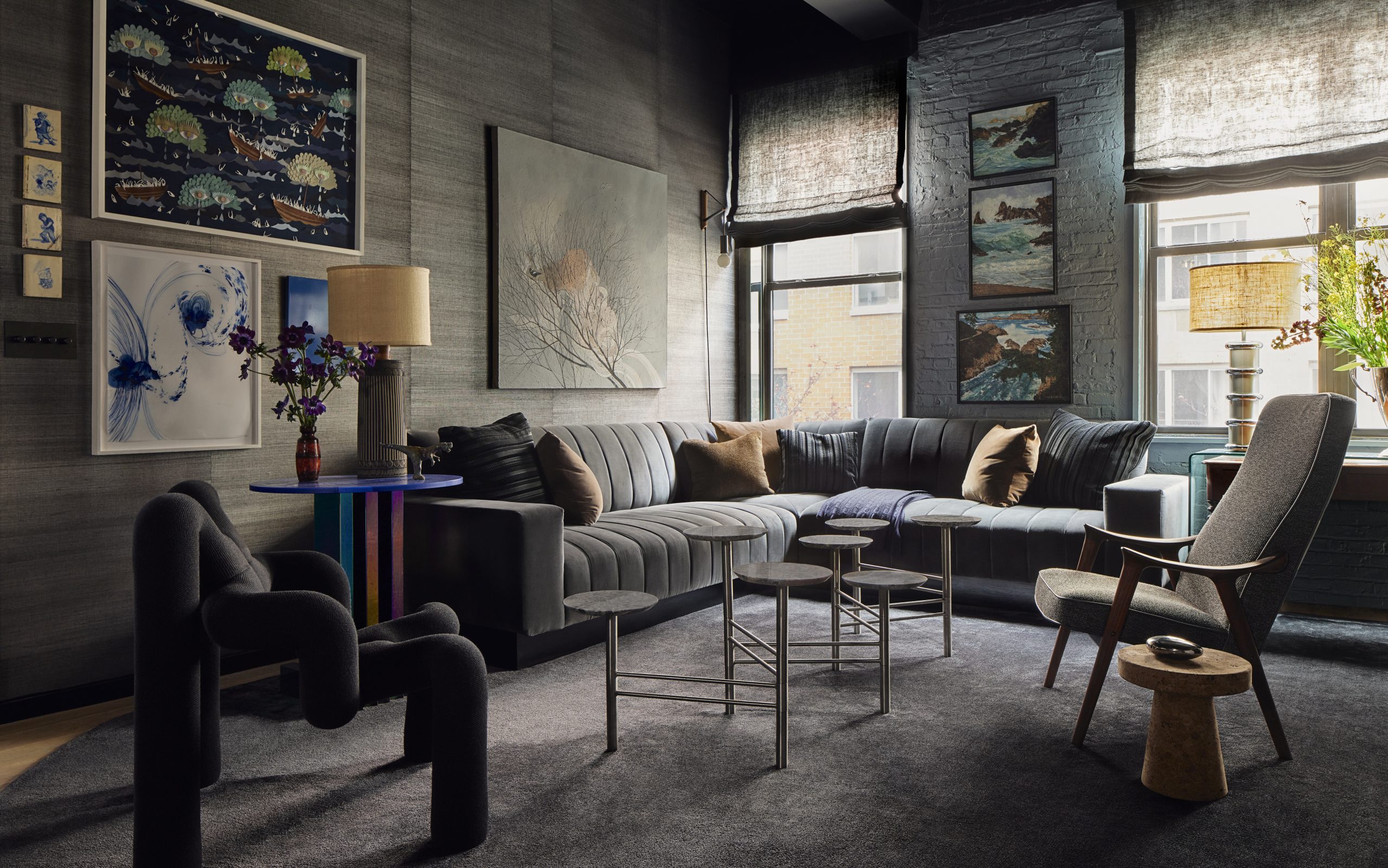
Clearly, matched sets aren’t Lee’s thing. “My worldview is very international, a hodgepodge of different cultures,” says the designer, who was born in Baltimore to a Taiwanese father and a German mother. From Baltimore, he went to Vanderbilt University, in Nashville, to study political science. At 23, he moved to New York. He worked at an ad agency while taking classes in interior design at Parsons. At a party, he met Greg Jordan, a designer with a classical style and an eclectic group of clients (including Blaine Trump, Ashley Judd and Larry David). Jordan sent him to Vail to install a house owned by pharmaceutical heiress Elizabeth “Libet” Johnson. It was a trial by fire, and after a week, Jordan offered Lee a job. He went out on his own in 2005 (the year Jordan died). These days, he has a streamlined operation — just two employees in a shared Chelsea office — and a lot of active projects in New York and Florida. “One thing that speaks well of me,” he says, “is that most of my clients are repeat clients. I have one client I’ve done six projects for.”
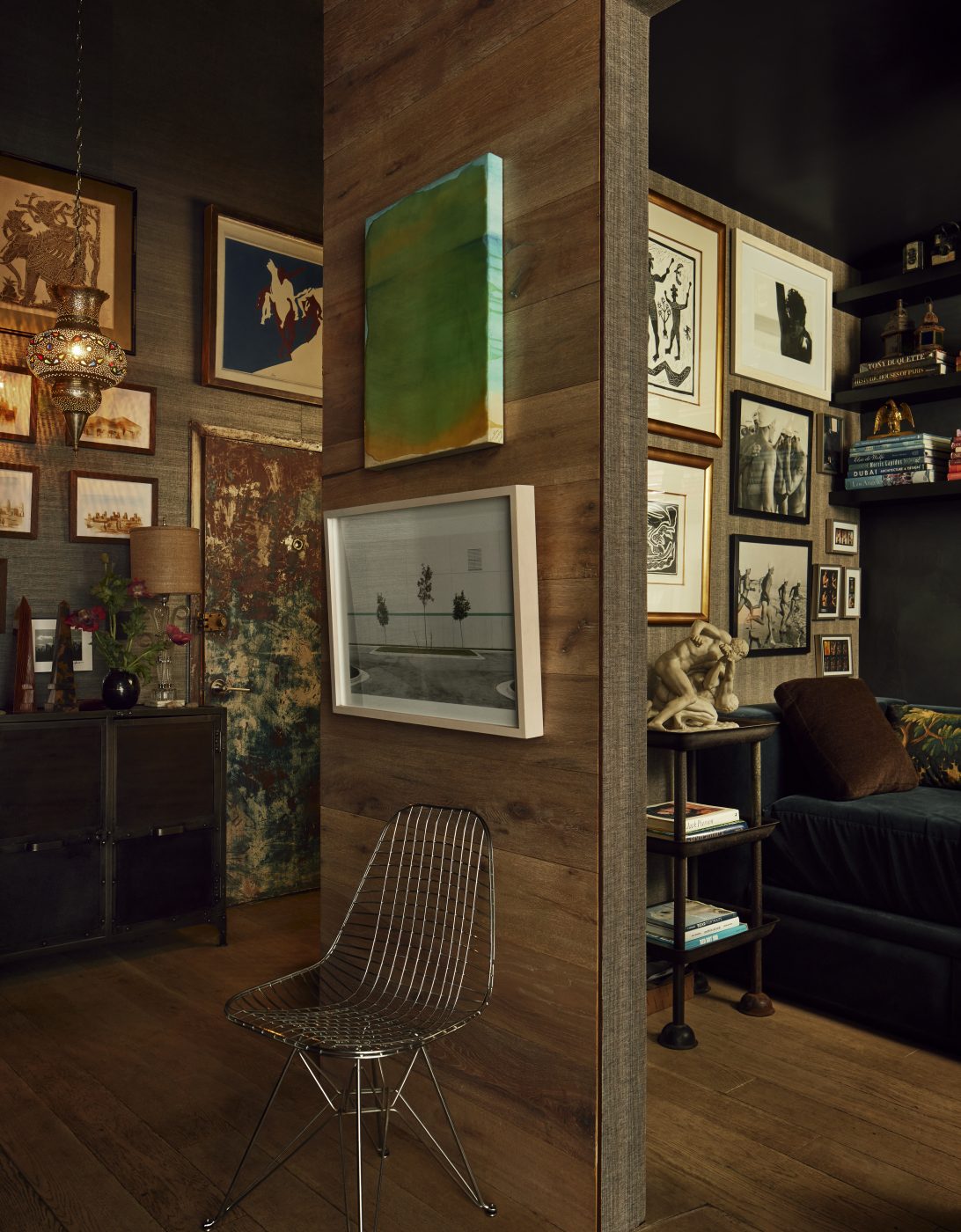
Something of a style agnostic, Lee says he’s happy to do minimalist homes for clients. His oeuvre includes an airy Soho loft and a streamlined mid-century modern house in La Jolla. But for his own place, he prefers maximalism, with pieces from the 19th, 20th and 21st centuries mingling as if at a furniture family reunion. “I like a home to look like an amalgamation of multiple lifetimes — as if it was furnished over several generations.”
In fact, the first thing visitors see as they come through the front door is a stout Biedermeier dresser, which couldn’t be more different from the living room’s Buzao side table, made of electroplated steel that has the colors of an oil slick. Nearby is a reconfigurable brass coffee table with seven Frisbee-size marble tops by Lebanese designer Nada Debs.
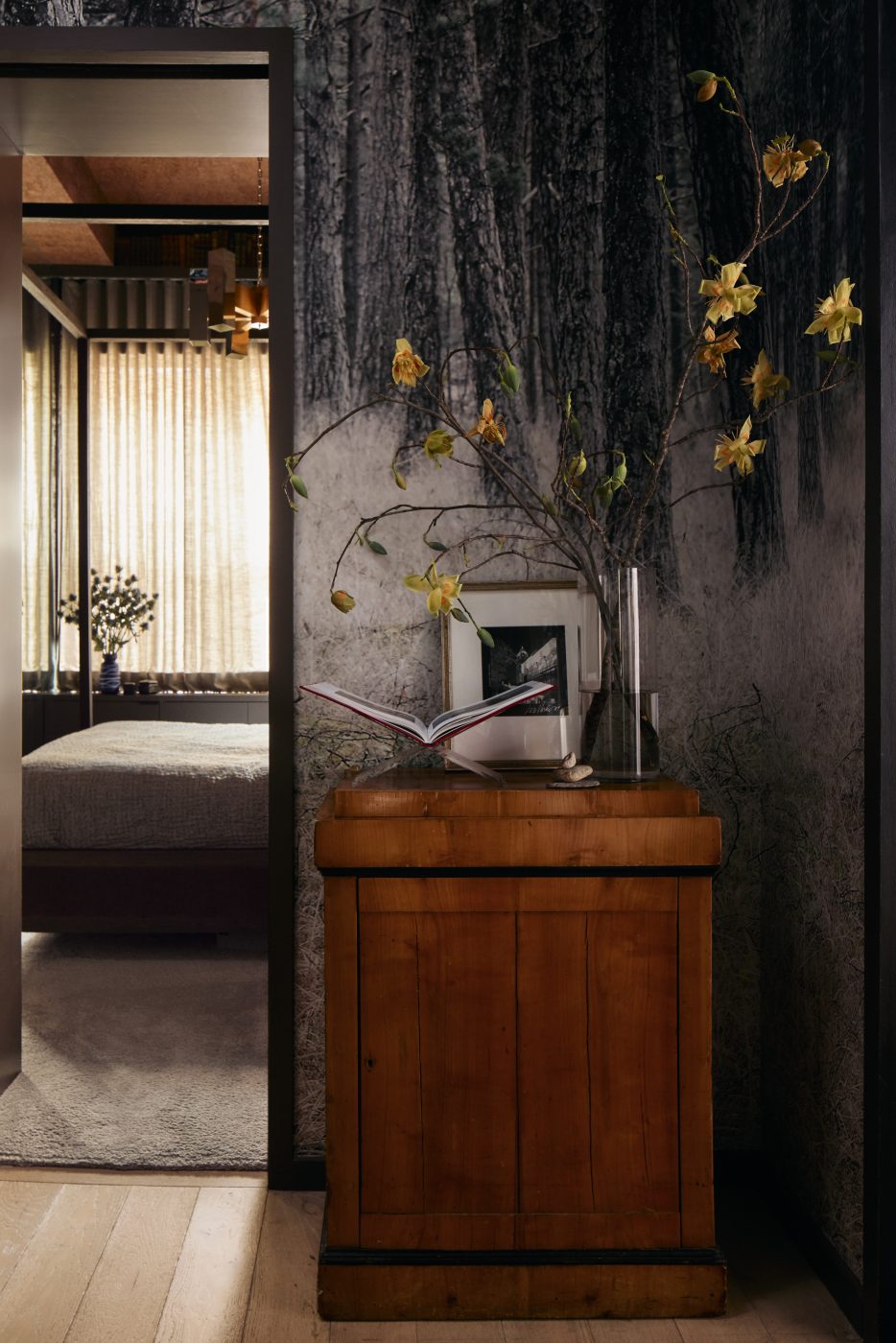
So is nearly all the lighting. Hanging over the dining table is a table-size leather and walnut pendant from Hinterland Design, “a place in Vancouver I never would have discovered without 1stDibs,” Lee says. Other purchases include the “mod” 1970s Lightolier chrome and oak chandelier over his bed and the 1960s German oak, chrome and pressed-glass chandelier in the study. 1stDibs was also his source for the 1950s Swedish oak sconces in the study and the apartment’s many table lamps, which are his passion. “I have lots more in my office. They kind of rotate in and out.”

“Maximalist” definitely describes Lee’s art collecting. Artworks, including paintings purchased on 1stDibs, are displayed throughout the apartment. The study alone has about 40 framed works on its not-very-wide walls. The wall next to the dining table is reserved, he says, for “moody purple canvases,” which “are dramatic in a sexy way.” (Artists include Britain’s Sir G. Christophe and Marc Foster Grant, a former fashion designer now based in the Pacific Northwest.) Hanging over the fireplace is a large painting by Robert Johnson of an interior not unlike the living room itself. “It’s art imitating life,” Lee says. Facing it is a collage of colorful creatures: Weepers and Floaters, 2008, by Michael Velliquette, a Wisconsin-based cut-paper artist.
“It’s a little weird, people drowning and monsters crying,” Lee says. “But I like things that are a little bit strange, a little bit off. And you should always surround yourself with what you like.”
